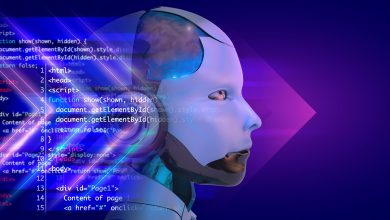
Three years ago, just 20% of global CEOs named artificial intelligence as the technology that would most significantly transform their business. Now, that figure is at nearly 75%, and research indicates that global investments in AI technologies will surpass $600 billion in the next three years.
The cycle of learning, adopting, and expanding the use of the latest technology capturing senior leadership’s interest is not a new one for IT teams, but it has arguably impacted their remit more than any other department. IT teams play an essential role in not just implementing and integrating new AI solutions, but also ensuring business users receive maximum value from them and can support them safely. Or, put another way: AI has joined the ever-expanding IT support roster.
AI is undoubtedly one of the most complex technologies of recent years, and IT leaders and agents must fill the skills gap required to properly utilize it. But AI also offers incredible opportunities to help IT teams simplify their work and take on more complicated challenges.
The AI learning curve
While the general business need for AI proficiency is seen as relatively nascent, the close ties between AI and IT specifically make it a more urgent need – with 28% of all industry job posts mentioning AI. Recent findings that many UK companies still struggle to hire candidates with the right IT and AI expertise, also show that a shortage of core knowledge and skills remains a persistent problem, affecting both technology progress and the quality of support offered.
As AI solutions continue their rapid rate of adoption, training and education will play a key role in overcoming the challenges that are – at least initially – associated with a complex technology. Moreover, giving individuals a base of practical usage advice they can build from, instead of having to master solutions on the fly, will result in a triple win of reduced pressure, enhanced confidence, and improved time-to-competency.
As for IT’s challenges regarding limited capacity to handle increasing volume and complexity of service requests and escalating user needs, AI is poised to offer a valuable and much-needed helping hand.
Streamlining service workloads
AI automation does not inherently equate to outright machine replacement. Gartner’s much cited prediction about rising generative AI use among knowledge workers, for example, specifically refers to taking on a defined portion (30%) of tasks by 2027, lightening the load for specialists so they can focus their expertise on higher value activity.
In the context of IT, this might include fielding time-consuming routine issues that often take up sizeable service bandwidth. Establishing conversational AI as an additional first point of user contact can streamline basic troubleshooting, with chat tools directly responding to basic requests such as running device diagnostics or answering common questions.
From the human agent standpoint, this enhanced efficiency decreases ticket volumes and bottlenecks, creating space to proactively deal with a smaller volumen of more complex tasks, including pinpointing and resolving issues with new AI-infused tech. Plus, IT leaders gain the ability to handle more queries with fewer resources.
Copilot assistance
AI also plays an important role in human-led IT tasks, driving swifter resolutions and stronger user satisfaction for agents. In effect short, AI copilots augmenting human capabilities with intelligent, real-time assistance to make them faster, more productive, and knowledgeable.
Copilots built with generative AI in particular can act as both super-charged search portals and delegation tools. When connected to internal IT knowledge stores, they give employees the ability to enter plain text queries and quickly retrieve insights about particular systems, tools, and practices that better equip them to understand and tackle user issues.
Similarly, human agents can hand over simpler elements of tasks by inputting relevant issue details and leveraging AI to produce automation scripts that can be executed on devices often without requiring human intervention, such as re-configuring network connections. In addition to enabling workers to use automation on their own terms, such use cases can also be a valuable aid in up-skilling new and current IT staff.
Simplicity from complexity
Providing effective IT management is getting harder as teams struggle to ensure the right structures and tools are in place for their workforce while balancing teams spread across locations and minimizing time lost on troubleshooting. At a glance, introducing AI to this mix might seem like one more complication to deal with, given the array of skills that intelligent technologies have typically required. The benefits that AI introduces for greater simplicity and efficiency, however, and the opportunities for generative AI to help teams further simplify workloads and take on more complex tasks, far outweigh initial onboarding hurdles. Coupled with training and the right tools, new AI solutions empowering IT teams to experts to automate, streamline, and better manage all aspects of their work.



